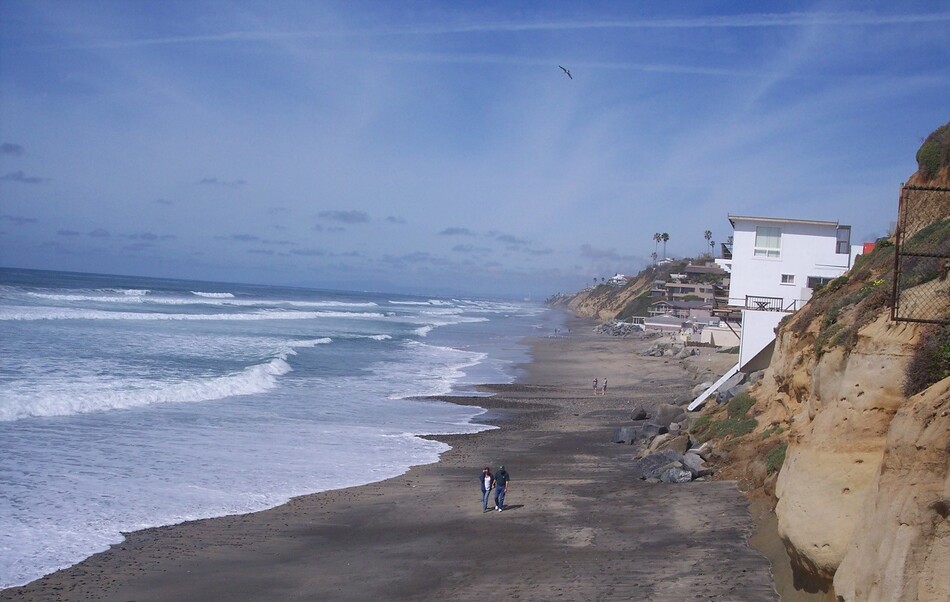The Climate and Our Beaches
The beaches and coastal resources in Encinitas offer great value to our community, the local economy, and the City’s many visitors. Moonlight Beach offers fun for the whole family, complete with volleyball courts, a playground, and firepits. Pipes (San Elijo State Beach) and Cardiff Reef (Cardiff State Beach) are packed with surfers from sunrise to sunset each day. Swami’s State Marine Conservation Area protects our local marine ecosystems, including kelp forests, surf grass beds, and rock reefs which support a variety of marine life. The Encinitas community’s deep connection to its coastal resources is self-evident. Unfortunately, the changing climate, a result of increasing levels of greenhouse gases in the atmosphere, poses a risk to our beloved beaches. Extreme weather events and sea level rise caused by climate change are expected to drastically alter our vital coastal resources over the next century.
Sea Level Rise
The two major causes of global sea-level rise are thermal expansion caused by warming of the ocean (since water expands as it warms) and increased melting of land-based ice, such as glaciers and ice sheets. The oceans absorb more than 90 percent of the increased atmospheric heat associated with emissions from human activity. Land-based ice melting is caused by increased atmospheric temperatures, also a result of greenhouse gas emissions.
Globally scientists have found that the world’s oceans have been rising over the past century, and the rate of sea level rise has increased in recent decades. According to the National Oceanic and Atmospheric Association, in 2014, the global sea level was 2.6 inches above the 1993 average – the highest annual average in the satellite records (1993-present). Sea level continues to rise at a rate of about one-eighth of an inch per year.
Higher sea levels mean that large storms have the potential to cause more damage along our coastline. In low lying areas, storm surges would push farther inland than they once did, resulting in more frequent flooding. This is especially a cause for concern along Coast Highway 101 and the Cardiff State Beach area. Along our coastal bluffs, storm surges could hit with greater intensity and increase the chance of bluff failures.
What is the City doing?
The City of Encinitas is preparing for the effects of sea level rise on multiple fronts. The Climate Action Plan, a citywide strategy to reduce greenhouse gas emissions, decreases the City’s impact on global climate change which plays a part in mitigating sea level rise. The Climate Action Plan identified several strategies the City can implement to adapt to climate change, making the city more resilient to future impacts like sea level rise. One strategy already in place is the recently completed Cardiff Beach Living Shoreline Project. The dune restoration project reestablished the coastal dune and natural vegetation that once existed in the area prior to the development of Coast Highway 101. The project combats rising seas by naturally buffering large storm surges and trapping sand that might otherwise get washed away.
How You Can Help
To help prevent sea level rise and climate change, you can strive each day to reduce greenhouse gas emissions on an individual level. Examples of this include, biking or walking instead of driving, installing solar panels on your roof, and conserving water whenever possible. Check out the City’s Climate Dashboard for more ideas.
On the local level, you can support projects such as the Living Shoreline and the San Elijo Lagoon Restoration which aim to return local ecosystems to their natural state, improving the health of the ecosystem and increasing community resiliency to sea level rise and other climate change impacts. You can find more information on current climate adaptation projects at the City’s Coastal Zone Management page.
Previous Post
Telecommuting and Beyond: What you can do to reduce vehicle emissions
Next Post
Encinitas’ Fight Against Single Use Plastic

